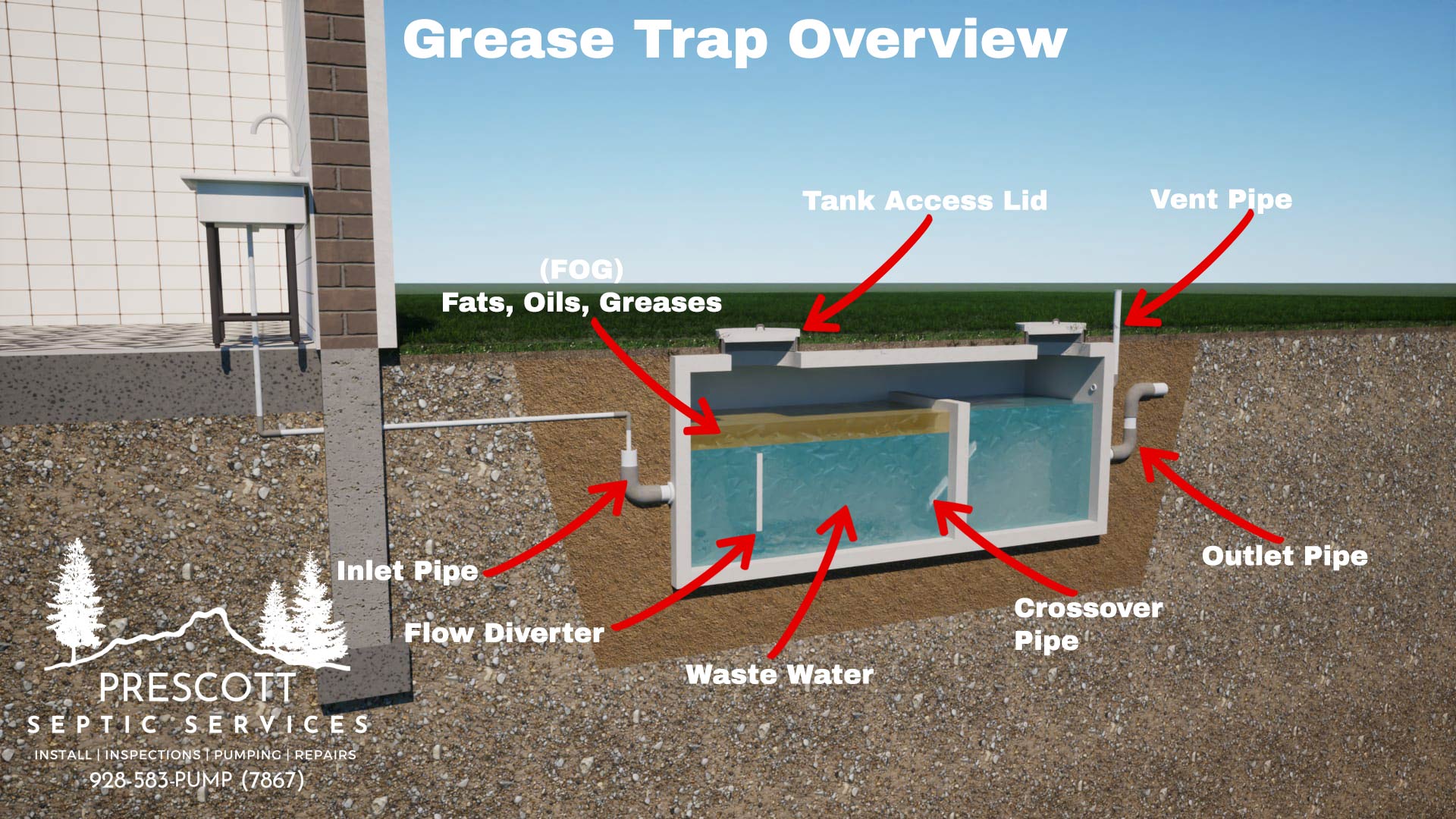Fill out the form below to get in touch with us.

Understanding The Septic Tank
The septic tank is a watertight container usually made of concrete, fiberglass, or polyethylene. It’s buried underground and designed to hold and partially treat domestic wastewater. The tank operates as a primary treatment chamber, separating solids and liquids through settling and flotation.

Inlet and Outlet Pipes
The pipe collects wastewater from your home and directs it to the septic tank, where heavy solids settle to the bottom, forming sludge. Lighter substances, like fats and oils, float to the top, creating a layer of scum. The outlet pipe, positioned at a lower level than the inlet pipe, allows the partially clarified liquid (effluent) to flow to the drain field for further treatment.

Baffles or Tees
These are located at the tank’s inlet and outlet pipes. Their role is to slow down the flow of incoming wastewater to reduce disturbance of the settled sludge and scum layers. They also prevent the scum layer from blocking the outlet pipe.

Ventilation
Proper ventilation is crucial to allow gases produced during the breakdown of waste to escape, preventing buildup and possible damage to the system or unpleasant odors around your property.

Drain Field
The drain field is a subsurface wastewater disposal area. After the wastewater leaves the septic tank, it’s further treated by the soil in the drain field, with harmful bacteria and viruses being removed.

Distribution Box
Before effluent reaches the drainfield, it passes through a distribution box (D-box), which evenly distributes the wastewater into a network of perforated pipes laid in gravel-filled trenches or beds in the soil. The D-box ensures that the effluent is spread uniformly across the drainfield.

Leach Pipes
These perforated pipes within the drainfield allow the wastewater to slowly drip out into the surrounding gravel or stone layer, which helps to filter and clean the water before it enters the soil.

Soil Treatment Area
As the final treatment stage, the soil absorbs, filters, and treats the effluent as it percolates through the ground, removing harmful bacteria, viruses, and nutrients. The clean water eventually joins groundwater systems.

Understanding The Grease Trap
Wastewater containing fats, oils, and grease enters the grease trap through the inlet pipe. This is the first stage where the initial separation process begins. The inlet is designed to slow down the incoming flow of wastewater, allowing for the separation process to start effectively.

Separation Chamber
Once in the grease trap, the wastewater cools down, causing the lighter fats, oils, and grease to separate from the water because they are less dense. These substances float to the top of the chamber. Meanwhile, heavier solids settle at the bottom. This chamber is the core of the grease trap, where the main separation process occurs, based on the difference in density between FOG, solids, and water.

Baffle System
Most grease traps have a series of baffles or barriers. These baffles are designed to prevent the floating grease from moving towards the outlet zone of the grease trap. They help in further separating the FOG from the water by directing the flow of the water while trapping the FOG and solids within the chamber.

Outlet Zone
After passing through the separation chamber and the baffle system, the relatively cleaner water reaches the outlet zone. This water, now largely free of fats, oils, and grease, exits the grease trap through the outlet pipe and proceeds to the septic system or sewer. The outlet is designed to ensure that the separated FOG and solids remain in the trap and do not exit with the wastewater.
